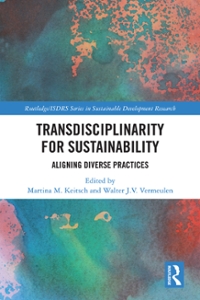. The U.S. 1will lilizelyr have to increase its militaryr activities in the Middle East. This should cause output to rise. . Suppose that the data shows that times of high consumer and rm borrowing are also times of high economic growth We could then conclude that nancial constraints are an important determinant of economic activity. . 'What I'L'Iacroeconomic models miss is that consumers do not want to borrow during recessions . Policies used to bring us out of one recession sow the seeds of the next. . During a liquidity trap. it is possible that increases in money supply can cause deation. . We observe that during the Great "Recession. housing prices drop substantially. Mean while, mortgage interest rate also drop. Therefore, a drop in interest rates causes declines in housing price. 3. Diamond 0G model with immigration policy We will investigate the possibility that the government has control over the rate of population growth, I: E [CL ] through controlling the amount of immigration. Time: discrete, innite horizon, t = 1,2. Demography: A. mass .Ti E .'n'.[1 + of of newborns enter in period t. thbese, .\\}_1 are native born and the rest are immigrants so that n E [II], ] is the rate of immigration. Everyone lives for 2 periods except for the rst generation of old people who live for one. Preferences: for the generations born in and after period 1; 3161.3; 6:.t+1} = Luff-31s} + 3 Elicia-+1} where c\" is consumption in period t and stage i of life. For the initial old generation [Ki-[(711) =li:G:_1}. Productive technology: The production function available to rms is FIE". I} = Kaliln where If is the capital stock. and .15" is the number of workers employed. You may nd it convenient to use the implied per young person production function, ffk} = k\" where Ff: is the capital stock per worker. Moments: Everyone has one unit of labor services when young. The initial old share an endowment, K1 of capital so they have {1 + r1}."c1 units each. Institutions: There are competitive markets every period for lab-or and capital. {You can think of a single collectively owned rm which takes wages and interest rates as given.} {a} Write down and solve the problem mood by the individuals born [or immigrating} in period t. {b} Write down and solve the representative rm's problem in period t. {c} Write down the market clearing condition for capital and dene a competitive equilibrium. I'd} Solve for an equation that characterizes the dynamics of the capital stock. 9. Consider the following version of the Sidrauski model. The economy is populated by a large number of identical yeoman farmers. Each farmer derives utility from consumption, c, real balances, m, = M/P, and labor, (, according to Eo Est In (c) + nIn (me) - XI+ 0-1. (MS) In equilibrium, lump-sum transfers equal seigniorage: M. - M+-1 (GBC) The farmer, however, takes s, as given. (a) Let 7: = P/P-_1 - 1 denote the rate of inflation. Set up the yeoman farmer's problem in real terms, and find the first order conditions. (b) Find: the labor allocation condition; the Euler equation for money; the Euler\fI 'When unemployed and eligible for benets he receives ow income li- per period, with probability 0. he receives a job oer and with probability \"_- he becomes ineligible for benets. (Note: getting a job and becoming ineligible are mutually exclusive events. Assume o +1. -:': 1.] I 'When unemployed and ineligible for benets he receives flow income 5 a.\" l: per period [5 is called subsistence allowance}. He continues to receive job oers with probability :1 per period. I All jobs payr the same wage, is T: b. A worker who gets hired while eligible for benets becomes employed end eligible for benets. He receives ow income u; per period and with probability J. he loses his job becoming unemployed and eligible for benets. I A worker who gets hired while ineligible for benets becomes employed and ineligible for benets. He receives ow income n: per period, with probability is he loses his job becoming unemployed and ineligible for benets, and with probability 1- he remains employed and becomes eligible for benets. (Note: losing a job and becoming eligible for benets are mutually escclusive events. Assume 5*. +1. r: 1.} I The key is that you have to have a job to become eligible for benets and you have to be unemployed to become ineligible. a. Write down the ow asset value [ow Bellman] equations for the worker. (Notation: use I: for the value to being in eligibility status, 1' = e.i and employment status y=u,e.} b. Show that if the capital gain associated with gaining eligibility when employed exceeds the capital loss associated with losing eligibility when unemployed, then the gain om employment over unemployment is larger for the ineligible than the eligible











